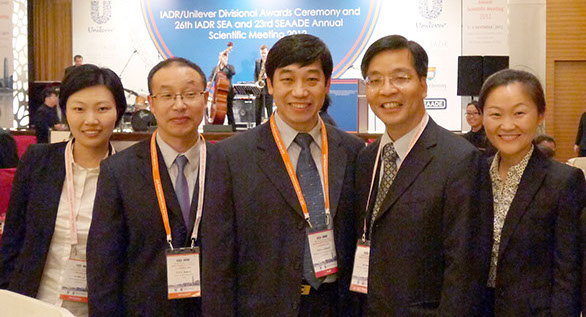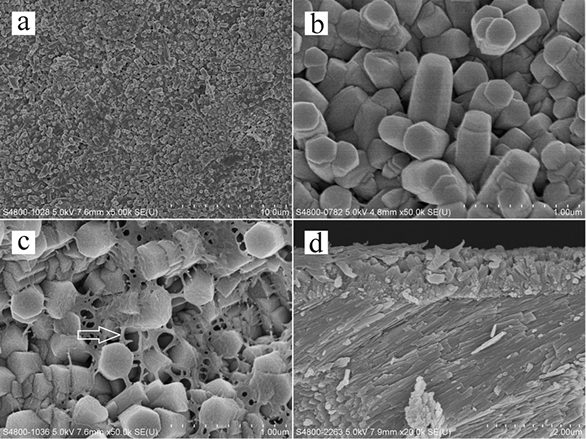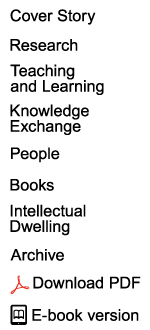A team from the Faculty of Dentistry spent three years experimenting with different materials to regrow enamel crystal in test tubes. They received a grant from the National Natural Science Foundation of China (NSFC) and Research Grants Council (RGC) for their work – the first such award given to Dentistry research at HKU.
“Enamel is mineralised tissue,” said Professor Chu Chun-hung. “It is not vital, it is dead – and when it is damaged or eroded away that is it, it’s gone for good. Existing treatment for this loss is to use artificial dental materials on the surface through bonding or covering the tooth with a crown. Our team thought that given the current trend for regenerative medicine, working to recreate tissue is better than adding something new.”
Their findings have big implications for the management of non-carious tooth loss resulting from dental erosion, attrition and abrasion.
“In non-carious tooth loss, erosion to enamel can be caused by drinking acidic beverages, toothbrush abrasion and so on,” said Professor Chu. “When too much enamel is lost it causes abnormal, hypersensitive teeth which are painful. Right now, people can use special toothpaste to stop the pain. But if you stop the pain, you are stopping the alarm system – it’s the pain that lets you know something is wrong.”
In addition to Professor Chu, the research team comprised Professor Edward Lo, Tam Wah-Ching Professor in Dental Science, Dr Mei Lei and Dr Cao Ying from HKU and Professor Li Quanli from Anhui University.
“So far, we have only regenerated the enamel within test tubes,” said Professor Chu. “Technique-wise we can do it, but clearly, a laboratory is far from the conditions of a mouth – for example, there is no bacteria. However, now we know we have the method we want to move on from test tube to animals then to humans.”
The team designed a hydrogel biomimetic mineralisation model for the regeneration of enamel-like mineralised tissue with a prismatic structure. In vitro, they were able to promote biomimetic mineralisation and thereby facilitate the formation of enamel prismlike tissue on human enamel which they had demineralised earlier.
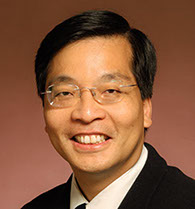
![]() Our team thought that given the current trend for regenerative medicine, working to recreate tissue is better than adding something new.
Our team thought that given the current trend for regenerative medicine, working to recreate tissue is better than adding something new. ![]()
Professor Chu Chun-hung
Self-assembled
The resulting oligpeptide amphiphile (OPA) was shown to have self-assembled into nanofibres in the presence of calcium ions and neutral acidity. The OPA was subjected to numerous tests, including transmission electron microscopy, scanning electron microscopy and energy dispersive spectrometry to evaluate the growth and assess its make-up.
“We were able to conclude that we had fabricated a novel OPA, which fostered the biomimetic mineralisation of demineralised enamel,” said Professor Chu. “This is a primary step towards designing and constructing novel biomaterial for use in treating dental erosion.”
A scientific article has been published on the research – ‘Agarose Hydrogel Biomimetic Mineralisation Model for the Regeneration of Enamel Prismlike Tissue’ – and it was awarded an HKU Research Output Prize.
The next step is to move on from the research stage to clinical trials – first with animals and further down the line with humans. “For that to happen, the team needs to get more funding,” said Professor Chu. “We have shown we can grow enamel in vitro, and we are now seeking funding to enable us further these important studies. If we can find an innovative and practical method to regenerate tooth enamel inside the patient’s mouth, future generations will benefit.”
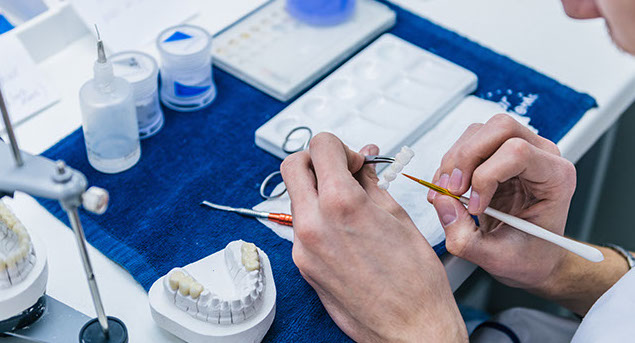
A Chance To
Overthrow The Crown
Replacing damaged tooth enamel with a crown could become a thing of the past if
research to regenerate enamel-like mineralised tissue on the actual tooth is given
a chance.
The team received the Research Output Prize from Professor Andy Hor (first from right), Vice-President and Pro-Vice-Chancellor (Research) in May, 2016.
From left: Dr Mei Lei, Professor Li Quanli, Professor Edward Lo, Professor Chu Chun-hung and Dr Cao Ying.
Scanning Electron Microscope (SEM) micrographs showing the regenerated tooth structure (enamel) and its high-magnification views.
Next
Back
